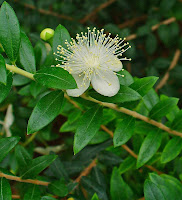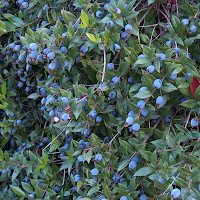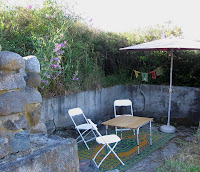
HAPPY NEW YEAR TO ALL!
As 2010 draws to a close and 2011 begins, everyone is making their list of the best and the worst perfumes of 2010, but I wouldn’t even know where to start. I’ve sampled too many different things, and forgotten far too many of them. For me, like Janus, it’s time to look back on the most salient events of the past year in my perfumery life, and look forward to what I’d like to accomplish in the coming year. So here goes with the top 5 in each category.
2010
- Spent a small fortune on raw materials and equipment, but now have a highly functional perfume organ that includes both naturals and synthetics.
- Started this blog in May. Except for a few breaks, I’ve been pretty good at posting regularly.
- Opened my online shop, Olympic Orchids Artisan Perfumes, in June. I’ve even sold a few things.
- Learned an enormous amount about existing perfumes through prolific sampling. None of them influence me much, since I have my own ideas about what to create. However, it’s good to know that I’m not duplicating anything that already exists, and it’s interesting to see how the perfumes that I’ve tried are presented to the public.
- Learned an enormous amount about raw materials, especially synthetics, and about formulating perfumes. In the process, I acquired a new appreciation for natural materials. I made some perfumes that were good, some that were not so good, and some that everyone likes but that I now wish I’d formulated a bit differently. Every attempt, successful or not, has taught me something. Now I’m full of new ideas about how to use all of the materials that I have.
2011
- Publicize and advertise my perfumes both locally and on a wider scale. I need to contact the shops that have already expressed interest and contact additional local venues. I’m not sure how best to go about publicizing my business on a larger scale, but will work to come up with a plan.
- Upgrade my website with new images, new products, and better descriptions. Eventually I’d like to go to a custom website, but that may take a while. At least I can start planning the design.
- Keep up with the blog. One feature that I had planned to include was a series of simple, educational, do-it-yourself perfumery projects that would be suitable for school classes or other groups. I’ll try to get some of those going this coming year, especially since I’ll be teaching a unit on perfumery in one of my classes.
- Fill out my perfume organ with some of the more expensive and/or exotic absolutes, CO2s, SCO2s and other high-end materials that I’ve put off getting for budgetary reasons, and make a series of very high quality all-natural perfumes.
- Keep experimenting and learning. Ultimately, this is the never-ending adventure that keeps me perfuming.
[Janus image adapted from Wikimedia]











